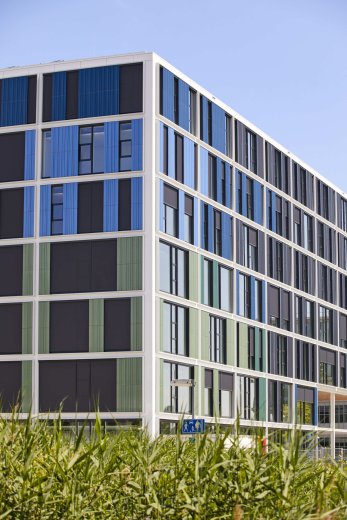
'This room makes me feel calm'
LAB42 is almost open for two years now. It was designed to be sustainable, energy neutral, smart and people friendly, but what are the actual experiences of people using this building? UvA PhD researcher Shruti Rao, who makes a strong plea for more user-centred research, aims to find out.
Shruti Rao is a PhD researcher in the field of Human Computer Interaction, but you may also say: Human Building Interaction. In her view, buildings are more and more becoming machines. ‘With the use of technology, buildings are becoming smarter. With smart facades for instance, that thermodynamically react to the environment. They have become very controlled objects, with almost no human in the loop.’



Shruti's PhD research focuses on LAB42, designed by Benthem Crouwel Architects. She conducted three studies to evaluate how the building impacts student emotions.
The first study involved a survey of 256 students who reported feeling calm in LAB42: 'I'm very stressed about my exam, but this room makes me feel calm'. Unlike in building 904, where feelings were more diverse. The second study was a "building walk" where students shared their feelings about different zones within LAB42. In the third study, sensors measured air quality, temperature, noise, light, and occupancy, revealing that access to natural light, or the perception of it, contributed significantly to the sense of calm. This phenomenon, called biophilia, underscores our inherent connection to nature and its calming effects.
Room for Improvement
Shruti identified areas needing improvement, like spaces where students felt cramped due to perceived low ceilings or lack of natural light. To address these issues, Rao plans to organize a design session with architects and building users to develop smart, multisensory biophilic spaces using AR and VR technology.
She emphasizes that user-centered design should extend beyond new buildings, aiming for widespread application in various environments, including classrooms and homes. This next phase of her research, although bureaucratically challenging, aims to bridge the gap in user involvement in building design.